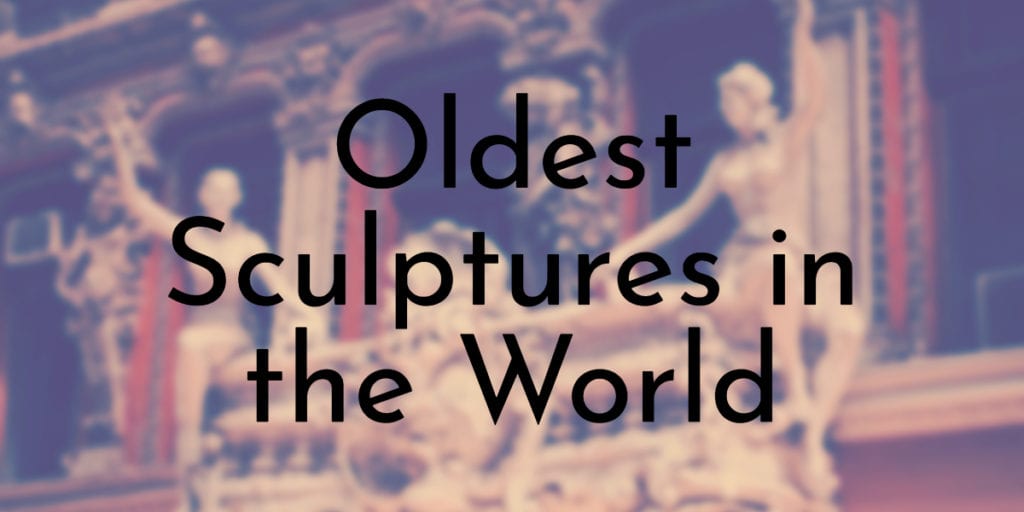Sculptures are a work of art that expresses emotions, creativity, and ideas. Some last a lifetime, but some last thousands of years.
Have you ever wondered how old sculptures can get? After all, most of them are made of strong materials. So, there’s a great possibility that they are older than some civilizations.
So, to help answer your question, we have made a list of the 10 oldest sculptures in the world. Take a look at them and be fascinated by how they give us a glimpse of history.
10. Laocoön and His Sons
Age: 2,049 to 2,090 years old (estimated)
Place of discovery: Rome
Material: Marble
Current location: Vatican Museums
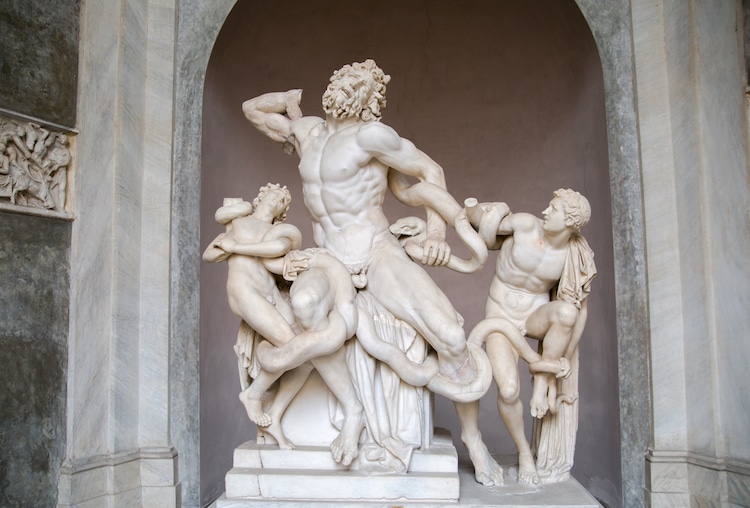
Also known as the Laocoön Group, Laocoön and His Sons is among the most famous ancient sculptures in modern society. The statue was in great shape for an excavated piece of art. As this might be the case, the masterpiece is still missing a few parts.
Studies show that the Laocoön and His Sons was restored multiple times in the past.
Did You Know?
The Laocoön and His Sons depicts the story of the Trojan priest Laocoön and his sons whose names are Thymbraeus and Antiphantes.
In this statue, they were being attacked by sea snakes. The minuscule attention to detail and the graphic facial description of the statue made Pliny the Elder, the famous Roman art writer, to praise the statue in the highest terms.
9. Venus de Milo
Age: 2,145 to 2,170 years old (estimated)
Place of discovery: Island of Milos, Greece
Material: Parian marble
Current location: Louvre Museum, Paris, France
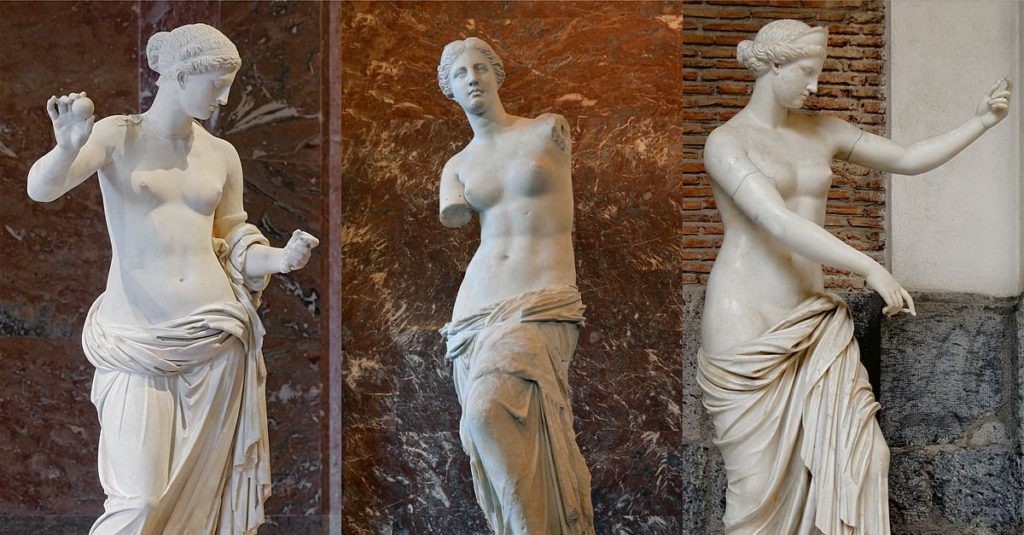
The Venus de Milo was rediscovered in 1820. It was initially believed to have been sculpted by Praxiteles. However, the life-size statue was later declared to be the sculpture of Alexandros of Antioch. Although the artwork misses both of its arms, its beauty is still manifested.
Did You Know?
The actual purpose or identity of the Venus de Milo isn’t fully established yet. According to most scholars, it is Aphrodite, the goddess of love for the Greeks. Since “Venus” is a Roman goddess name, the sculpture is called by others as Aphrodite de Milos instead.
Other scholars believe that the statue is the representation of Amphitrite, the sea-goddess worshiped by the islanders of Milos.
8. Hermes and the Infant Dionysus
Age: 2,400 years old (estimated)
Place of discovery: Temple of Hera, Olympia, Greece
Material: Parian marble
Current location: Archaeological Museum of Olympia
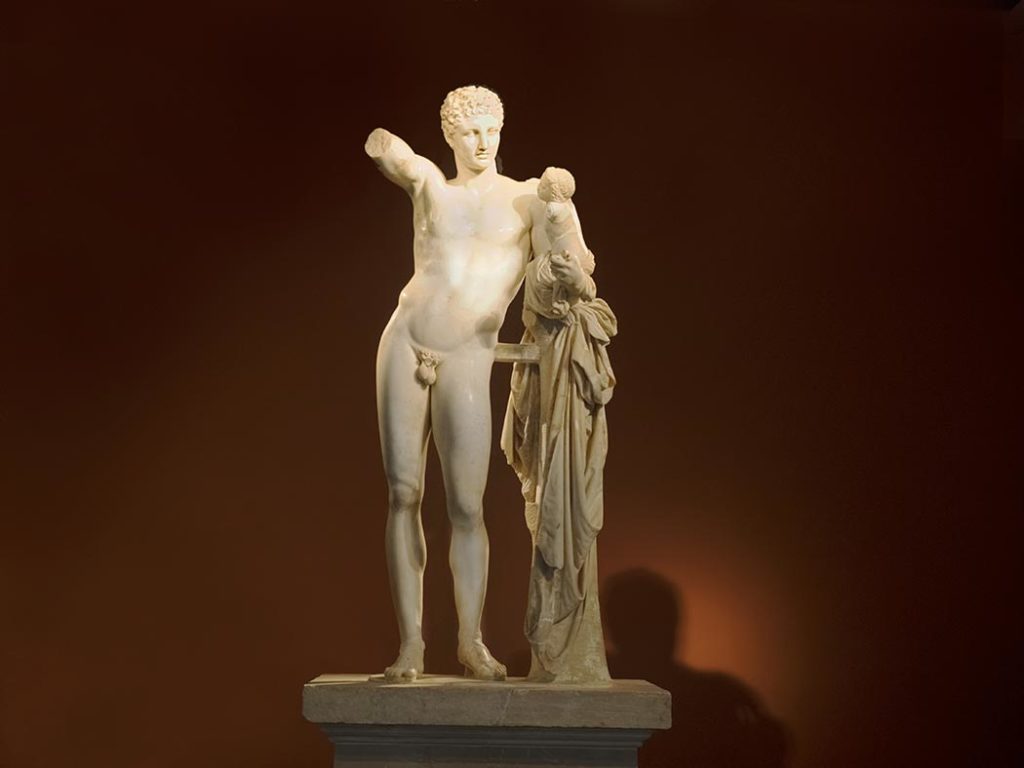
The Hermes and the Infant Dionysus is believed to be created by Praxiteles, based on the remark made by the Greek traveler Pausanias. However, there’s still a great debate regarding who really made the statue.
Did You Know?
The Olympia site, where the Hermes and the Infant Dionysus, were discovered was hit by an earthquake. The building collapsed, which destroyed the statue.
It was in 1874 that Greece worked with Germany to explore the Olympia site. That’s when the statue was found. Although broken into pieces, scholars were able to piece them together with all the pieces available. Today, we find the restored statue in the Archaeological Museum of Olympia.
7. Charioteer of Delphi
Age: 2,496 to 2.500 years old (as of 2022)
Place of discovery: Sanctuary of Apollo in Delphi, Greece
Material: Bronze
Current location: Delphi Archaeological Museum
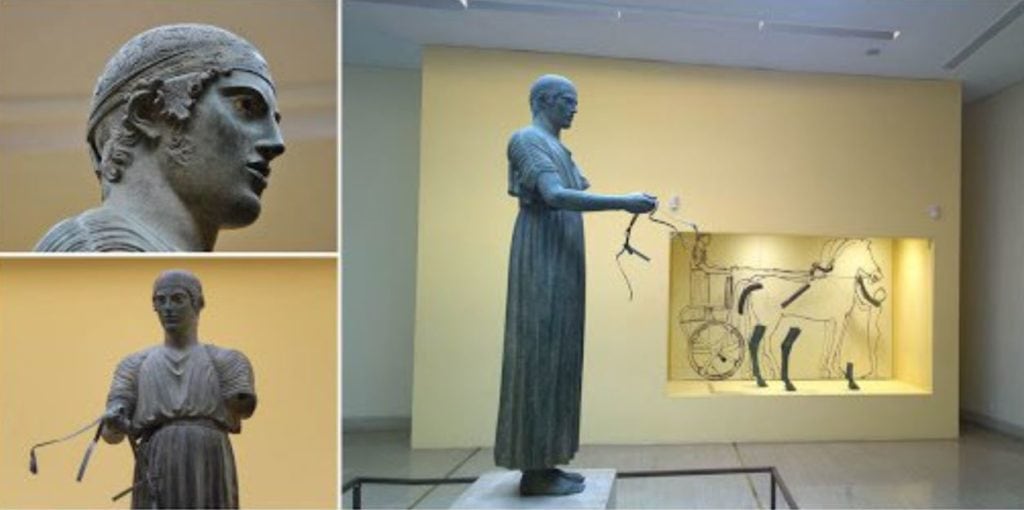
The Charioteer of Delphi was discovered in 1896 by French excavators near the temple of Apollo. The find was a rare one because only a few bronze statues actually survive the test of time.
With great detail and exquisite carving, the life-size statue reminds modern people how it was like living in ancient Greece. Only the statue survived and no horses were restored. Although, it is believed that there were four horses that originally accompanied the statue.
Most Scholars attribute the statue to Pythagoras of Samos.
Did You Know?
Polyzalus of Gela, the tyrant ruler, commanded the creation of the Charioteer of Delphi. It is believed that there are two reasons for the statue. One is to commemorate Polyzalus’ victory in the Pythian Games. The second is to offer thanks to the god Apollo.
6. Great Sphinx of Giza
Age: 4,300-4,500 years old
Place of discovery: Limestone
Material: Partially restored
Current location: Giza, Egypt
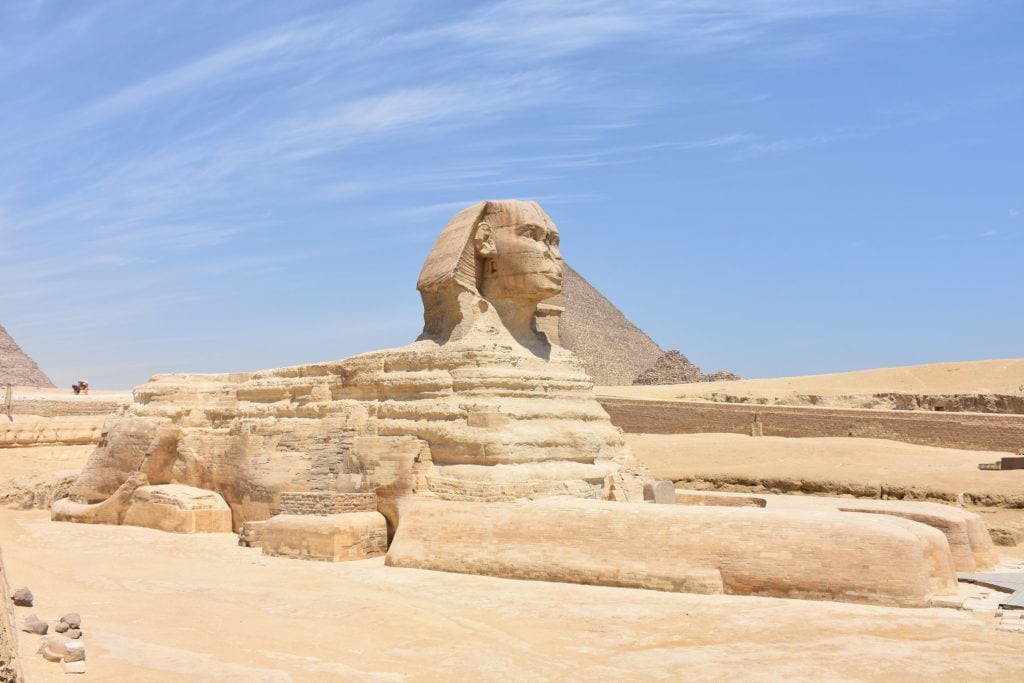
Scholars believe that the Great Sphinx of Giza was built during the rule of Khafre, estimated to be about 2558–2532 BC. Because of its mammoth size, it is among the most popular and recognizable statues across the globe.
The Sphinx was originally carved out from bedrock. Layers of limestone blocks were then added to restore its shape and form.
Did You Know?
The Great Sphinx of Giza is massive. With a length of 73 meters, a height of 20 meters, and a width of 19 meters, it is the largest monolithic statue in the world. The Sphinx, in the ancient world, is considered to be the sun god, Horus of the Horizon.
5. ʿAin Ghazal statues
Age: 9,000 years old
Place of discovery: Archeological site of ʿAin Ghazal in Jordan
Material: Plaster and reed
Current location: Jordan Museum and Amman Citadel in Amman and other museums
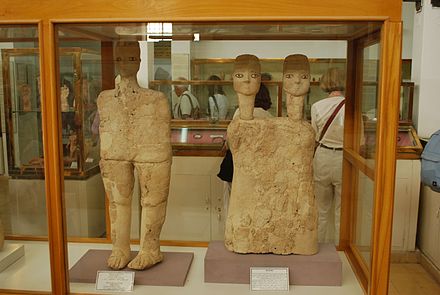
The ʿAin Ghazal statues are a collection of various statues made of lime plaster and reed. They are believed to have been carved between 7200 BC and 6500 BCE. Because of their age, the ʿAin Ghazal statues are considered to be the earliest large-scale statues formed with human likeness.
Did You Know?
The ʿAin Ghazal statues are remarkably well-preserved considering how old it is. They were found in the ʿAin Ghazal site in 1983. Initially, there were about 15 busts and 15 statues discovered in the area. Since the statues were meticulously stored in pits dug under the floors of ancient houses, they survived the test of time.
4. Venus of Dolní Věstonice
Age: 25,000 to 29,000 years old
Place of discovery: Paleolithic site Dolní Věstonice, Czech Republic
Material: Ceramic
Current location: Protected by Moravian Museum
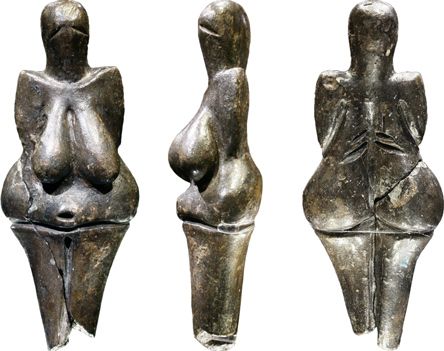
The small statue was discovered in 1925 during systematic archeological research led by Karel Absolon. Like other Venus figurines, the Venus of Dolní Věstonice follows the usual morphological appearance. It has large hips and bellies, large breasts, and a small head. Other body parts don’t have many details.
The Venus of Dolní Věstonice is considered to be a symbol of fertility and might have been used for ritualistic rites.
Did You Know?
Researchers believe that originally, the Venus of Dolní Věstonice is ornamented with feathers on its head. You can find four holes on top of the head, where you can easily insert small feathers. So, the original look of this sculpture might be more beautiful than it is today.
3. Venus of Willendorf
Age: 25,000 to 30,000 years old
Place of discovery: Paleolithic site near Willendorf, Lower Austria
Material: Oolitic limestone
Current location: Natural History Museum in Vienna, Austria
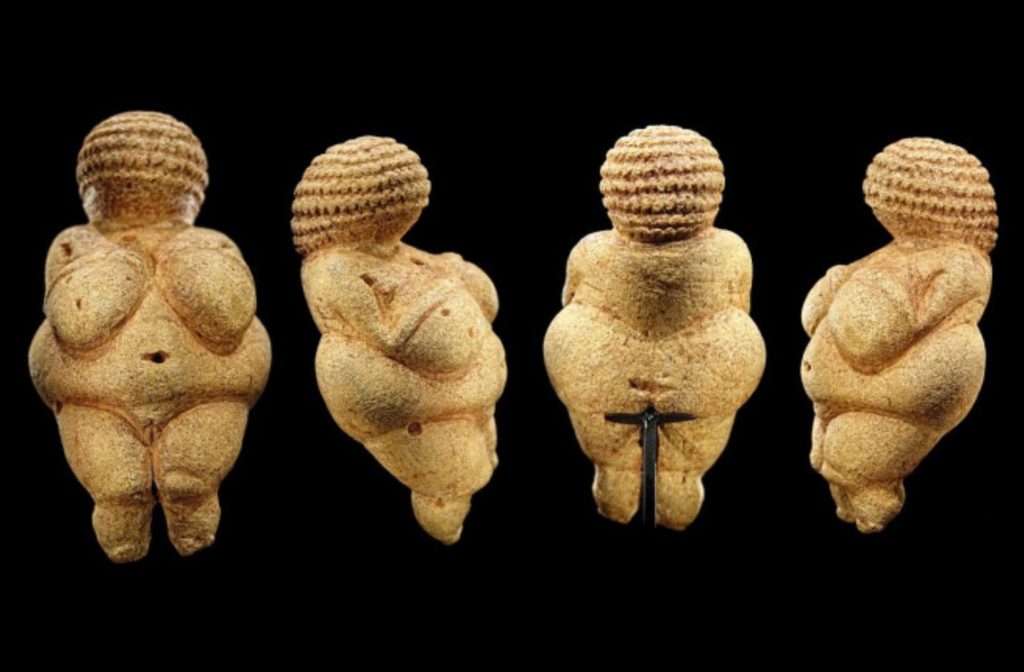
It was in August 1908 that the Venus of Willendorf was discovered during an excavation led by Josef Bayer, Josef Szombathy, and Hugo Obermaier.
It’s quite interesting that the figurine was made of oolitic limestone, which can’t be easily found around the area of excavation. This suggests that the figurine was made elsewhere and was just eventually brought to the place where it is found. Plus, it is tinted with red ochre as well.
Did You Know?
The Venus of Willendorf is considered to be one of the “Venus figurines.” However, some scholars prefer to call them “woman figurines” since Venus is only a metaphorical term.
According to interpretation, this figurine represents a goddess of fertility. Little is known about its origin, how it was made, and even what its cultural significance was.
2. Venus of Hohle Fels
Age: 35,000 to 40,000 years old
Place of discovery: Schelklingen, Germany
Material: Prehistoric Museum of Blaubeuren
Current location: Venus of Schelklingen
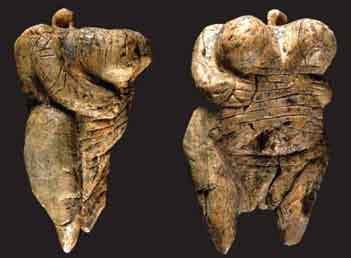
The Venus of Hohle Fels is considered to be the oldest figurine that depicts a human being. It is believed to have been sculpted by a Cro-Magnon man from the Aurignacian during the early Upper paleolithic era.
The figurine sculpture is made of wooly mammoth tusk. Regrettably, the figurine was broken into fragments when discovered. Thankfully, the majority of its parts have been discovered.
Did You Know?
The Venus of Hohle Fels is a sculpture of a woman’s body with exaggerated parts. Archeologists interpret this as a figurine about sex and reproduction. Some suggest that it can be pornographic in nature while others its a symbol of beauty and longevity.
1. Lion-man
Age: 35,000 to 40,000 years old
Place of discovery: Hohlenstein-Stadel, Germany
Material: ivory
Current location: Löwenmensch figurine; Lion-Human of Hohlenstein-Stadel
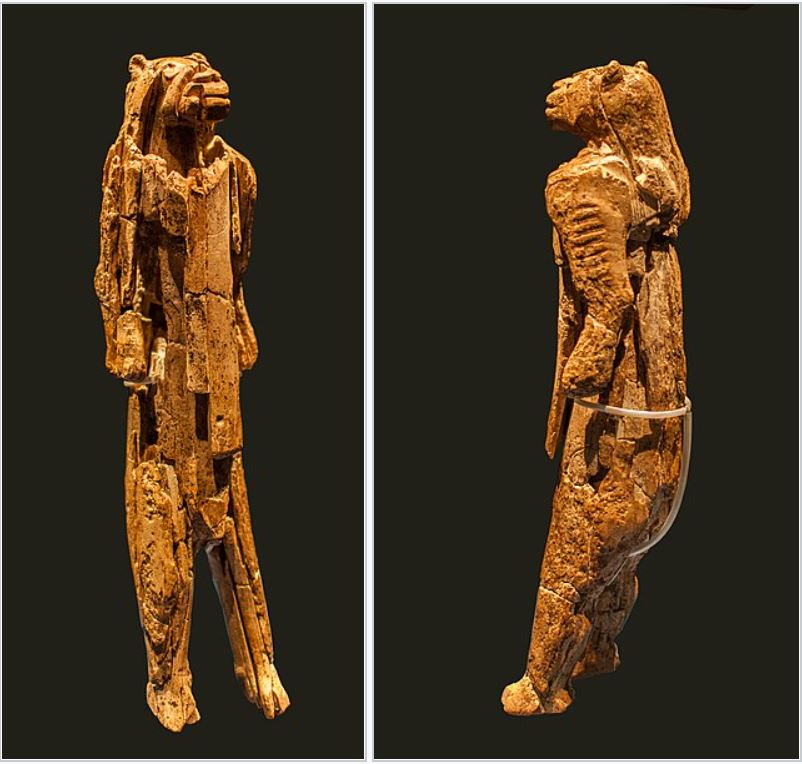
The Lion-man is the oldest sculpture in the world. It was discovered in a German cave in 1939. According to archeologists, the sculpture was created during the Upper Paleolithic era.
Looking at the figurine, it looks like a human being with the head of a lion. As a zoomorphic art, the figurine is sculpted out of mammoth ivory. The cuts suggest that a flint stone knife was used to carve out the sculpture.
Did You Know?
The actual gender of the Lion-man is debated. Some suggest that the plate on the abdomen of the figurine is a flaccid penis. Others believe it is a pubic triangle. Nevertheless, the figurine is actually small. It is only about 12 inches tall, 2.2 inches wide, and 2.3 inches thick.


